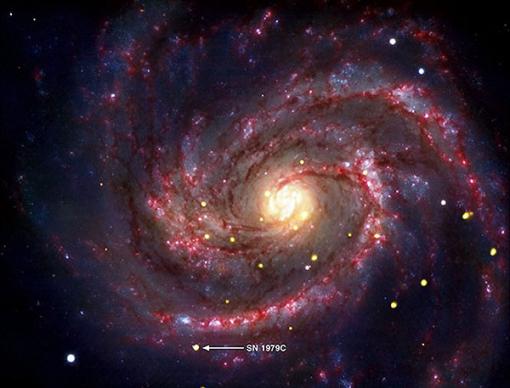But Zwicky was also capable of insights of the most startling brilliance. In the early 1930s, he turned his attention to a question that had long troubled astronomers: the appearance in the sky of occasional unexplained points of light, new stars.
然而,茲威基聰明過人,具有敏銳的洞察力。20世紀30年代初,他把注意力轉向一個長期困擾天文學家的問題:天空中偶爾出現而又無法解釋的光點--新的恒星。
Improbably he wondered if the neutron—the subatomic particle that had just been discovered in England by James Chadwick, and was thus both novel and rather fashionable—might be at the heart of things. It occurred to him that if a star collapsed to the sort of densities found in the core of atoms, the result would be an unimaginably compacted core.
令人難以置信的是,他懷疑問題的核心是否在于中子--英國的詹姆斯•查德威克剛剛發現的,因而是新奇而時髦的亞原子粒子。他突然想到,要是恒星坍縮到原子的核心那種密度,便會變成一個極其堅實的核。

Atoms would literally be crushed together, their electrons forced into the nucleus, forming neutrons. You would have a neutron star. Imagine a million really weighty cannonballs squeezed down to the size of a marble and—well, you're still not even close.
原子實際上已經被壓成一團,它們的電子不得不變成核子,形成了中子。這樣就形成了一顆中子星。想像一下,把100萬枚很重的炮彈擠壓成一粒彈子的大小--哎呀,這還差得遠呢。
The core of a neutron star is so dense that a single spoonful of matter from it would weigh 200 billion pounds. A spoonful! But there was more. Zwicky realized that after the collapse of such a star there would be a huge amount of energy left over—enough to make the biggest bang in the universe. He called these resultant explosions supernovae. They would be—they are—the biggest events in creation.
一顆中子星核的密度如此之大,里面的一調羹物質會重達900億千克。只是一調羹啊!然而,不僅如此。茲威基意識到,這樣的一顆恒星坍縮以后會釋放出大量的能量--足以產生宇宙里最大的爆炸。他把這種由此產生的爆炸叫做超新星。它們會是--實際上也是--創建宇宙過程中最大的事件。











